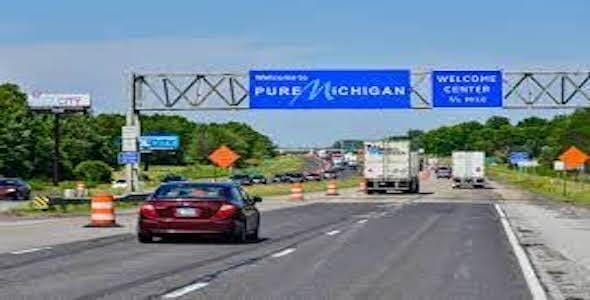PERSONAL INJURY LAWYERS FIGHTING FOR CAR ACCIDENT VICTIMS
Sometimes, we are all guilty of driving too fast for the road conditions and maybe just too close to other cars. In some cases tailgating can cause a rear-end crash. We hope learning a few things about using your brakes will help make you a safer driver. In order to be a safe driver, it’s important to understand stopping distances and perception time to be able to avoid being involved in a car accident collision.
What does leaving enough distance between you and the car in front do?
- Gives you a better view of the road ahead.
- Give yourself time to react and stop in time if cars ahead suddenly brake.
- If you don’t need to brake and accelerate frequently, you can save some gas
If you’re interested in learning more about stopping distance and perception-reaction time, keep reading.
What is car stopping distance?
In an average size car, your stopping distance is time and room that it takes to bring a moving car to a complete stop. The following is required to stop a car:
- The time it takes you to react to the hazard (perception and reaction distance), and
- The time it takes for the brakes to actually bring your car to a complete stop (braking distance)
You can calculate the time it takes to stop a car by using this distance formula:
Stopping distance = perception-reaction distance + braking distance
How much stopping distance do I need in front of my car?
When you are driving a car, you should leave plenty of room in front of you to be able to come to a complete stop behind traffic. You need enough room ahead in case the traffic suddenly slows down, causing you to brake. However, your stopping distance will vary depending on the factors like the weather conditions and your driving speed. The stopping distance needed to stop will increase the faster you drive, and the condition of the road e.g., wet surface. Remember, you also need some time to see and process what’s happening before you can start braking. The distances in this article are based on the average car length in the US and assumes the road is dry.
Stopping distances at different speeds
Generally, the stopping distance at 20 mph is around 3 car lengths. At 50 mph it’s around 13 car lengths. If you’re traveling at 70 mph, the stopping distance will need a huge 24 car lengths.
What can affect perception-reaction distance?
Besides your speed, other factors such as the following can affect your reaction time:
Drugs and alcohol
• Drinking alcohol and taking drugs can both slow down your reaction time.
• Slower reactions increase the distance you travel before you react to danger ahead or begin to stop.
Distractions
• If you’re not completely focused on the task of driving on road ahead of you, then you will need more time to react.
• GPS, mobile phones and other in-car technology can distract drivers.
• In Michigan it’s illegal to text while driving. But even use a hands-free cell phone to call can take your attention off the road so be careful.
• Talking to passengers and fiddling with the entertainment system or heater can also take your attention away from the road.
Tiredness or Sleepy
- Lack of sleep or can severely affect your driving attention, awareness, and reaction time.
- On your longer trips, you should take a break every couple of hours.
- Research has shown that your ability to concentrate go down and you will be slower to react after driving for 2 hours.
These are just some of the many factors that affect how quickly you react and hit the brakes when you see a hazard ahead of you. Once you brake, your stopping distance will depend on your car’s condition as well as the road and weather conditions.
What is braking distance?
Braking distance is the distance in feet that your car will continue to travel on the road once you hit the brakes before it comes to a complete stop. The braking distance traveled will increase as your speed goes higher.
For a typical car with dry pavement, the braking distance at 50 mph is approximately 130 feet. The braking distance at 70 mph is a huge 246 feet, which is about 82 yards.
What is perception reaction distance?
Perception reaction distance is the distance your car travels between the time you spot a hazard and starting to brake.
If the car in front of you suddenly slams on the brakes, then no matter how hard you try, you won’t be able to brake until you perceive and decide to react. It’ll take you time see and react, and therefore, you will travel some distance before you react to what’s happening, decide to brake, and then hit the brake pedal.
As a rule of thumb, if you are paying attention to the road ahead, it will take about 1 second to perceive and react. Obviously, the faster you’re going in your car, the further down the road you’ll travel in that 1 second time.
So, the perception reaction distance at 50 mph is as follows:
Perception time = ¾ of a second to 1 second
Perception distance = 55 feet.
Reaction time= ¾ of a second to 1 second
Reaction distance= 55 feet.
What can affect braking distances?
You should leave at least the recommended amount of space when you drive a properly maintained car in good road and weather conditions. However, there are some additional factors that can increase braking distance:
Speed
The faster you drive your car then you will need more room to stop your vehicle. In other words, as your speed increases your stopping distance and force of impact. The increase and force of impact are one of the main reasons why speeding leads to dangerous car accident crashes.
Condition of Brakes:
• The condition of your car’s brakes will affect braking distance, so keep your brakes properly serviced.
• Contrary to popular belief, ABS brakes will not significantly reduce braking distance. ABS brakes actually increase braking distance needed on snow or gravel surfaces. ABS brakes will allow you to keep better control and steer while braking.
• Suspension wear will increase the distance, as weight transfer while braking affects performance of the braking system.
Condition of Tires
- Different kinds of tires have different wet and dry grip ability, and depend on their tread pattern and the rubber used.
- All new tires usually have a tire traction rating, which goes from AA (highest) to C (lowest).
- Tests have shown that tires with only 1/8inch of tread travel about a third further before stopping than new tires. So check your tire tread to make sure your tire aren’t too worn.
- Braking is also affected by tire pressure. Both under and over inflated tires will increase braking distance.
Weather conditions
- If the road is wet or icy, this will significantly increase braking distances.
- Double the gap between your car and the car in front when the road is wet.
- Leave an even bigger trailing gap if it’s snow or ice – some people advise 10 times bigger gap.
Road condition
• A poorly maintained road surface or muddy road surface will increase your braking distance.
Car Weight
• The braking distance will also increase as the weight of you car is increases.
What is the two second rule?
The 2 second rule is a good rule of thumb that refers to a rough guide to use that you’re leaving enough stopping distance between you and the car ahead. Here’s how the two second rule works:
- Choose a fixed point on in front of you.
- Look when the vehicle immediately in front of you passes that fixed point.
- Make sure you are at least 2 seconds or more away from the fix point before you pass the same fixed point.
- This 2 second method is used to estimate keeping a safe distance behind traffic in front of you.
This is a good rule of thumb for car stopping distances in dry conditions, but if it’s wet you should double the gap to 4 seconds.
Remember that it’s only a rough guide and there’s a margin for error.
Need a Car Accident Lawyer? Call 866-HIRE-JOE
If you or a loved one have been injured in a car accident, call us at 866-HIRE-JOE for a free no obligation consultation. We know from experience that even the most careful drivers can be involved in a crash if they are speeding or following too close, especially when the roads are icy, slippery, or snow-covered. Michigan No-Fault insurance law is complicated and getting benefits paid can be perilous without a lawyer. Our experienced car accident lawyers have the experience and winning track record you need to win the financial compensation you rightfully deserve.
Get more specific information about your car accident case or to start your case today, contact The Joseph Dedvukaj Firm or 866-HIRE-JOE for a free, no-obligation remote consultation from the safety of your home. BBB Rated A+ injury law firm.


